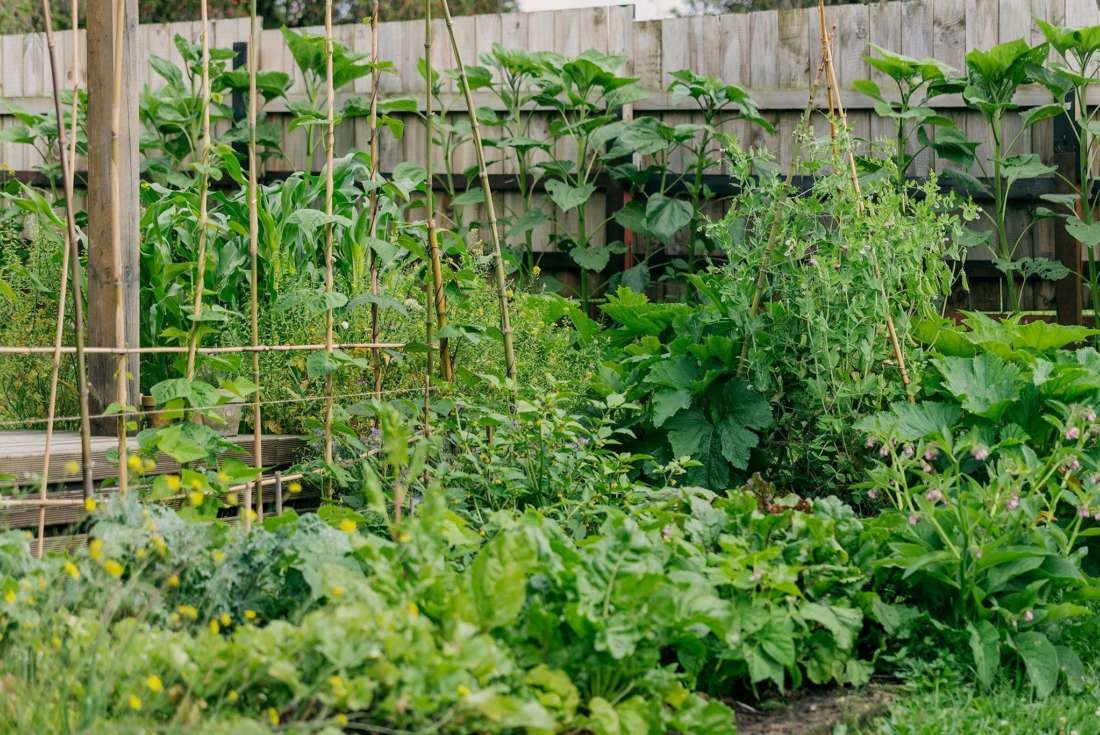Category — DIY
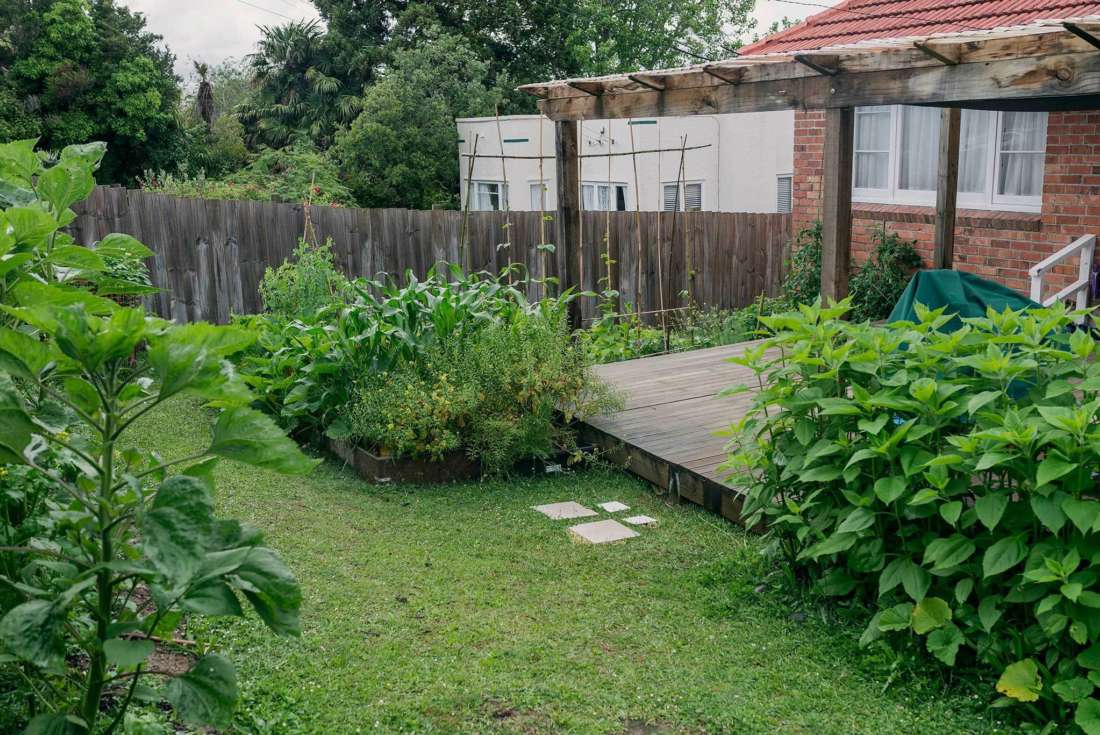
My pinalanggang ginikanan
Back to my roots. Words and images by Charles Buenconsejo
I grew up in paradise, in a small town called Consolacion on the beautiful island of Cebu in the Philippines. Reminiscing about my roots, I can’t stop thinking about the way our entire community used to be and how beautiful the town was before progress arrived.
Back in the day, self-sufficiency was practised as our way of life. Growing up in the early 80's until as recently as the 2000's, life was simple; food and community were abundant and readily available everywhere. The entire town used to be surrounded by native fruit trees such as black plums, watery rose apples, sugar apples, mangoes, jackfruits, sapodillas, guavas, and many others. People used to grow their own fruit and vegetables and almost every family in our village raised native pigs, chickens and turkeys for their daily needs. There were beautiful springs and streams to swim in, catch fish and forage for water spinach anytime. Some of our neighbours used to hunt bats, usually after a big storm, and cook them for the community. There was literally no scarcity.
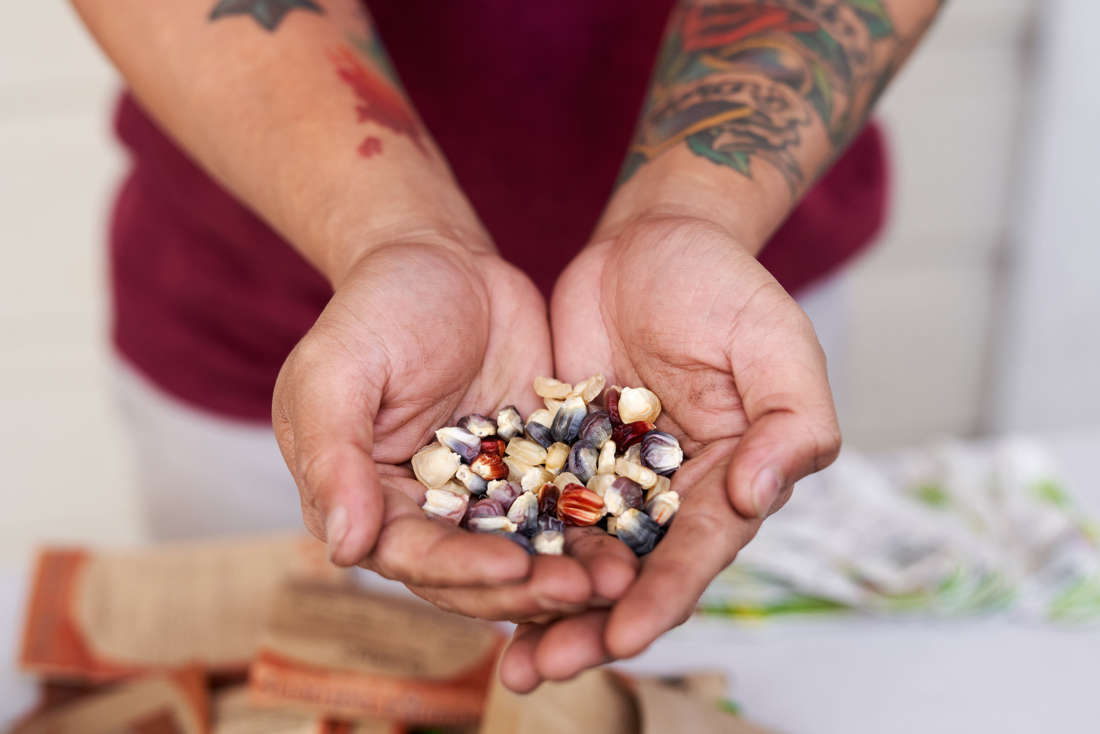
Charles with seeds by a friend.
Since then our landscape and way of life have gradually been eroded. People these days have been convinced to buy industrialised food from new malls instead of growing it at home or shopping at the local market. We came to believe that producing our own food meant that we were poor, too poor to afford to shop at the grocery stores where it is more convenient. Farmers are seen as the lowest of the low in society, and worst of all, my people avoid the sun because they are afraid that their skin might get darker, which has a long history as a sign of inferiority in a colonised land.
In 2007, I left my hometown and moved to Metro Manila to further my career as a photographer and artist. For nine years I exhibited prolifically, winning prestigious art awards while also doing a lot of editorial and commercial photography. In spite of this, living in Manila felt uncertain; I witnessed the transformation and the destruction of it’s landscape, a more intense version of what I’d experienced at home. The noises grew louder and louder each day as the number of shopping malls and skyscrapers multiplied like a virus. Living amongst the chaos of progress became physically and mentally exhausting.
There were no open public spaces available to share and within which to reflect, so my wife and I had no place to go but shopping malls. We submitted to a hyper-consumerist lifestyle, they became our place of comfort, our opium. But the truth is, shopping malls only give a false sense of comfort while you are inside them, once you step outside you are back to the ‘magulo na realidad’ – the chaos of Manila life. Broken roads, intense traffic, severe floods, dysfunctional public institutions and extreme wealth and poverty. To escape these harsh realities my wife and I became nomads.
The pursuit of the opposite of Manila brought us to Aotearoa, New Zealand. Our perception of New Zealand was ‘100% Pure’, people living in harmony with nature, never far from experiencing its beauty. Fewer malls and wide open spaces for recreation and contemplation.
But we experienced a bumpy ride when we arrived in Auckland, struggling to find work which we had been told by advertisements was abundant, competing against other migrants and locals also desperate and hungry for it, while our savings evaporated. Our only option was to look for the cheapest place to live in Auckland. We found it, literally, but it was like a correctional institution, the rooms like cells. Our neighbours were recently released prisoners, prostitutes, poor migrants and people with psychological problems. Every time we stepped outside our unit’s door and walked into the long gloomy corridor we were reminded of how ironic our life had turned out to be. We were back in the chaos. We even saw a manhunt when armed police surrounded our building looking for gang members who were hiding there armed with shotguns.
Eventually my wife landed a full-time job and I introduced myself to Stone Soup, who welcomed me and asked me to shoot a story about Jerome Ozich, a breadmaker. The same day as that shoot I met Leisha Jones who introduced me to an art director, which eventually led to some photography work for other magazines. We were able to slowly replenishing our savings, which allowed us to move out of our cell and into a house in the relatively quiet suburb of New Lynn.
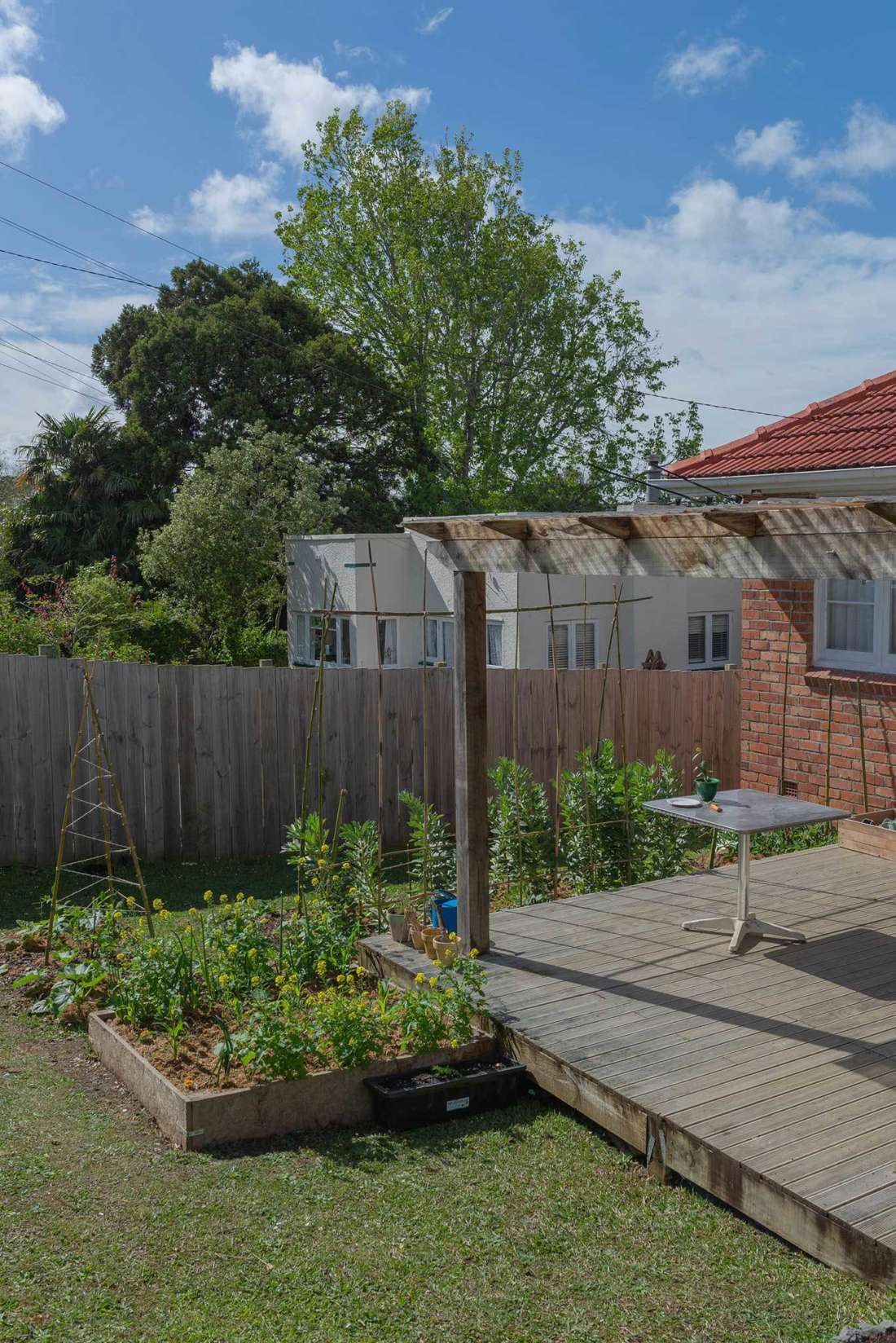
Soon after moving I was involved in a car accident and I lost my license. An accident on a chaotic roundabout meant I now had a criminal record in my new country and I was stranded at my house. Then our backyard, which had a lot of greenery and space with fruit trees, was destroyed when the construction of two new houses began. The loud noises of bulldozers and waves of workers felt inescapable. Suddenly I was back in the midst of madness, and the anxiety returned. I felt isolated, disoriented, displaced and disconnected from my previous self and from my friends back home. I wanted to be part of a community and get back to making art but I was lost.
When you migrate to a new place, it is as if you are a plant that was removed from its natural habitat – deep and complex roots eventually start to develop in the soil as you slowly adapt and try to survive in your new home. Looking for a way to deal with my anxiety, I was reminded of the words from my Kiwi friend Aaron, who constantly told me that instead of being imprisoned by dystopian thinking, fuelled by dystopian entertainment, I should focus on some ‘paradise engineering’, move away from youtube algorithms and take action in the real world. I was sceptical and cynical. Was he crazy? What difference could it make? But he took me to volunteer with For The Love of Bees (FTLOB), his garden was a living example, and the idea of building my own farmers market in front of my house got me inspired. As the urban ‘Gangsta Gardener, Ron Finley, said, “growing your own food is like printing your own money!”. Who doesn’t want to print their own money – what did I have to lose? Since I am a freelancer I had the privilege of time and our house had a barren front lawn, a space to try my own organic garden. I asked permission and my landlord said yes.
It was the beginning of autumn when Aaron and I dug up my first two garden beds. We displaced and murdered a lot of worms that day; mud was everywhere, it was like a battlefield. Even though I was very exhausted and covered in mud from digging all day, I felt very fulfilled as I was beginning to look forward to doing something creative and important again.
It quickly became an obsession, within two weeks I had created another four garden beds on my own. He told me that the key to starting was observation, paying attention to my surroundings. I had become active and was seeing things in a different light. I stopped the topsoil from the construction site in our backyard from going to the dump and used it in my garden; I started building sculptures out of discarded construction materials; I saved clay and processed it for pottery making; I gathered bricks, tiles and rocks from around the house and turned them into borders for the beds.
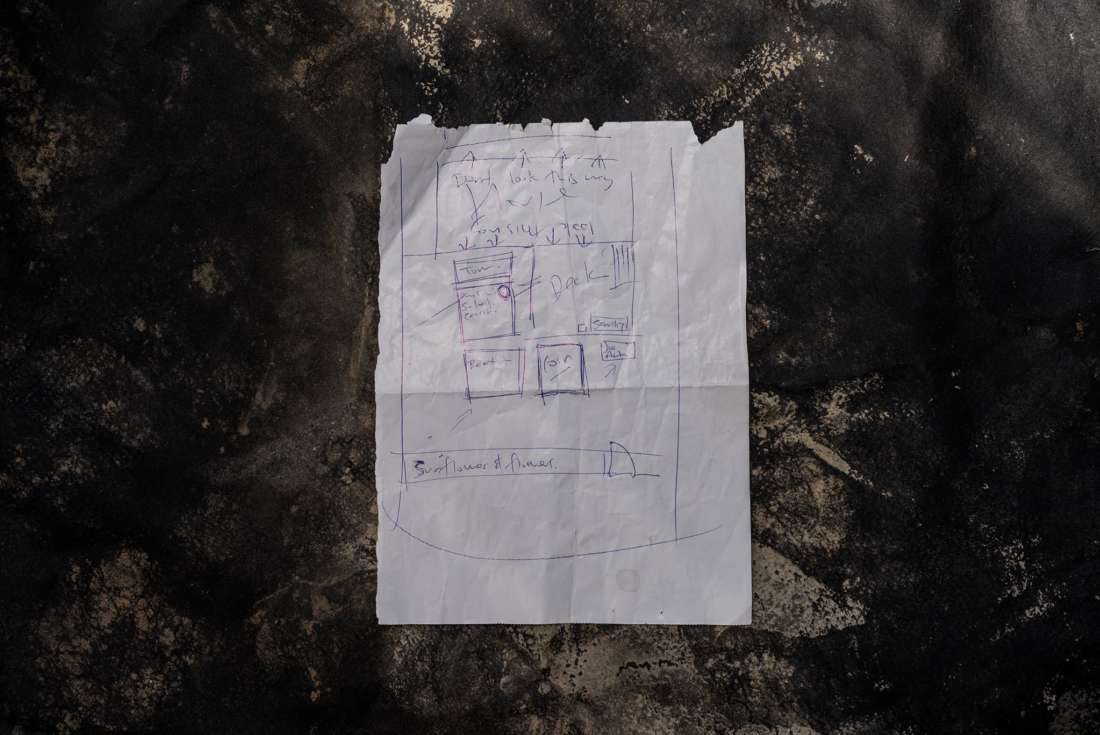
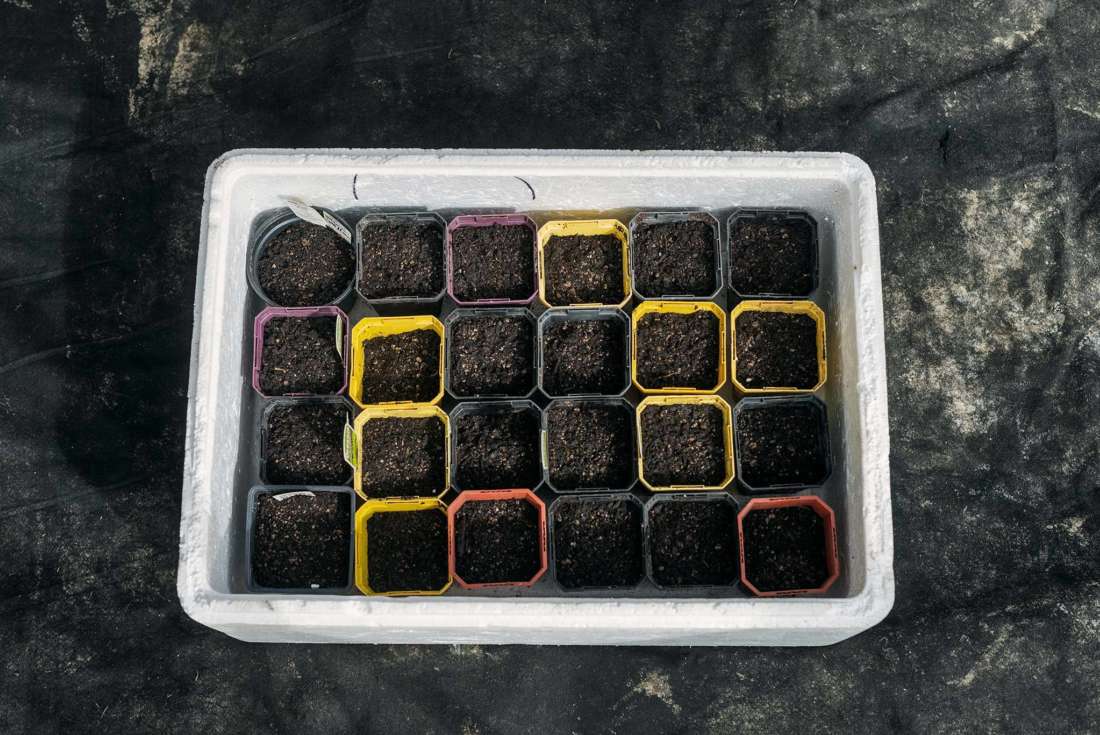
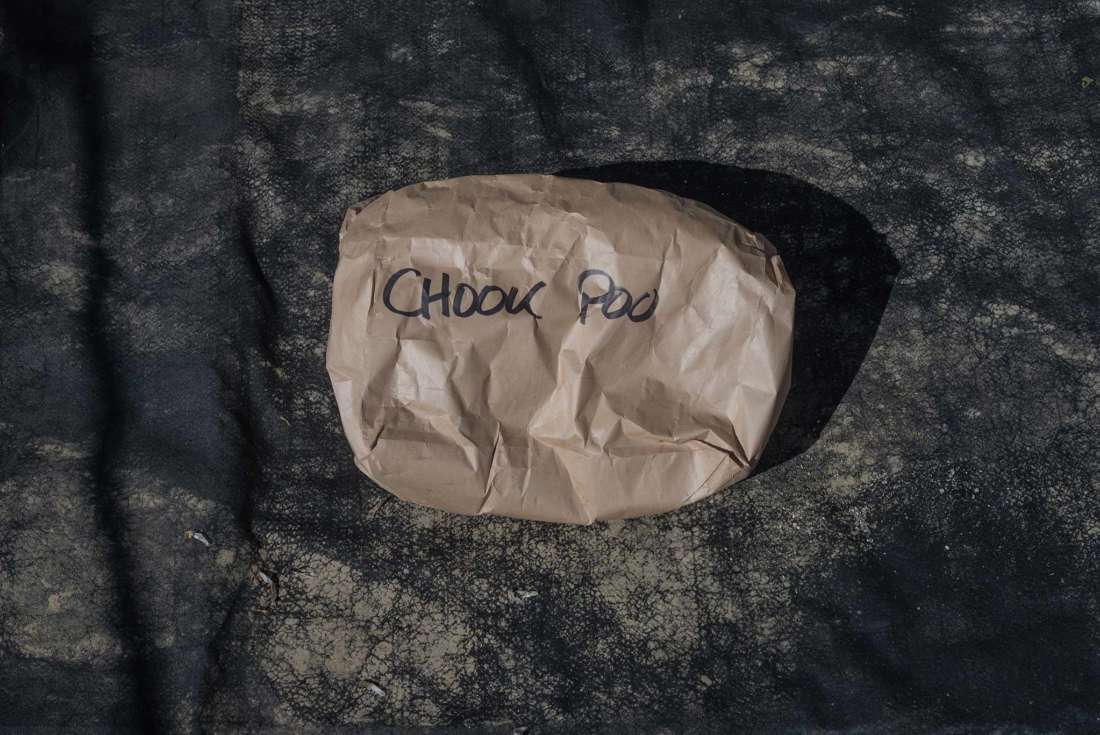
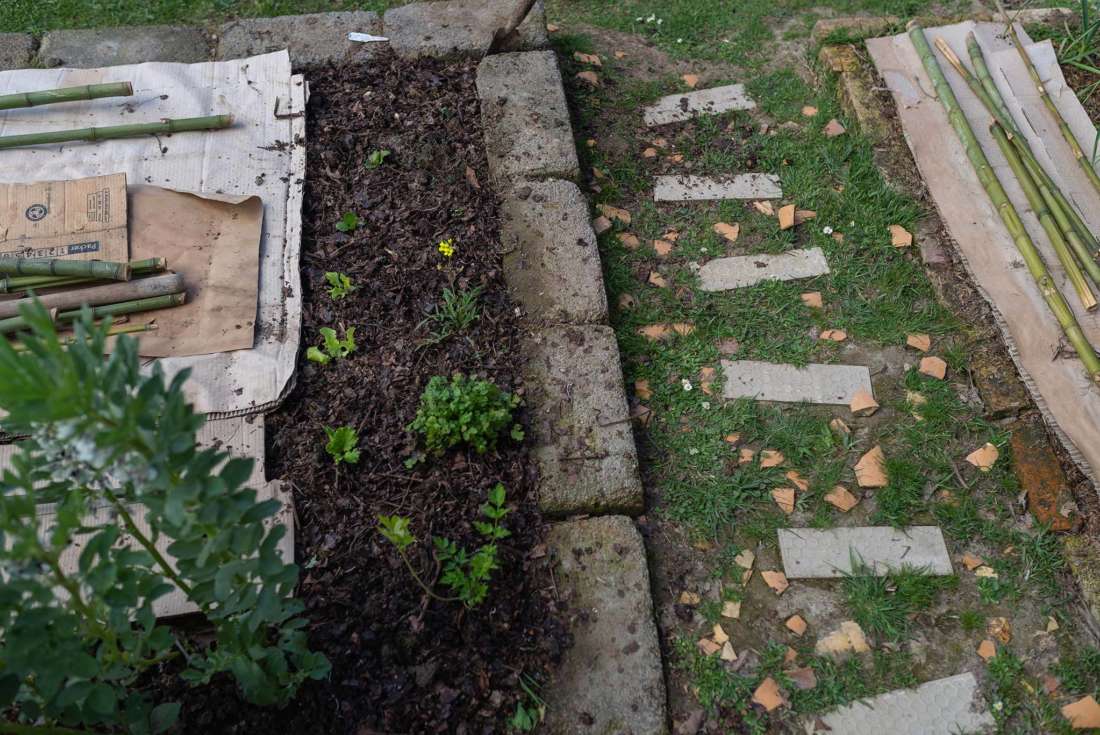
Not being able to drive turned out to be a good thing, it helped me to slow down and observe my environment. Urban foraging for free resources for my garden on my morning walks became one of my favourite things to do. I did the community a favour, scavenging discarded materials that were dumped in the bushes. I built a wooden worm farm out of an abandoned cabinet, created a raised bed out of pieces of discarded wood and found tarpaulins to cover and kill the weeds for my third bed.
To start composting we went to a tree lined street in the leafy suburb of Grey Lynn to collect autumn leaves and to Takapuna Beach to collect seaweed after a winter storm. And I collected bamboo from local parks to create frames for beans and stakes for tomatoes and sunflowers that I would plant in my garden when spring arrived.
I have started to interact with and build relationships with some of the people who surrounded me. I met a sweet old lady over my back fence while I was gathering beautiful rich soil I had discovered under an old tree. She has been living in our neighbourhood for more than 50 years and has a thriving veggie garden. She told me about the history of our neighbourhood and gave me a big bag full of sweet mandarins. I hung out with the tradies working on the construction site and cooked them ‘lechon’ (Filipino roasted pork) which I served them at my table. In return for my hospitality they gave me more materials that I transformed into a gangster compost bin and potato tower.
Now that summer is approaching my garden has a variety of vegetables that I’ve grown myself from gifted and heritage seed, and twenty sunflowers from seeds given to me by Levi who I met through FTLOB, which he grew and saved in his own urban garden. I’ve had a lot of help, and as I spend more time there, people often look over my fence to check it out and more and more people say hi. Recently an old Asian man was looking over the fence so I invited him inside and gave him a tour. He did not speak English but the happiness on his face was plain to see as he gazed at my plants. Now every day he says hello and has introduced me to his wife and grandchildren. Although language still prevents us from talking properly, I can’t express in words the way the connection makes me feel. But it is real, and I can’t wait to be able to share my abundance with his family.
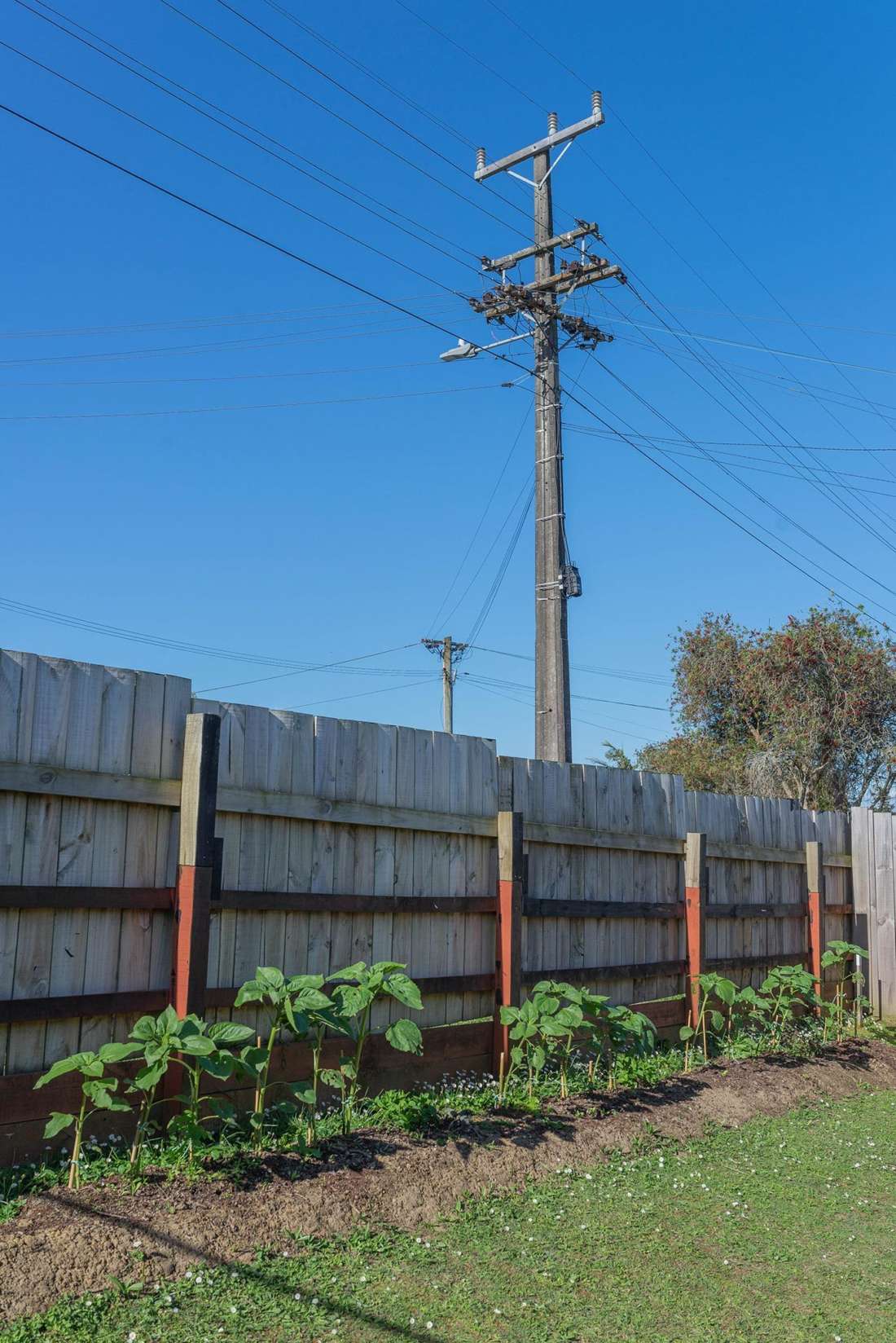
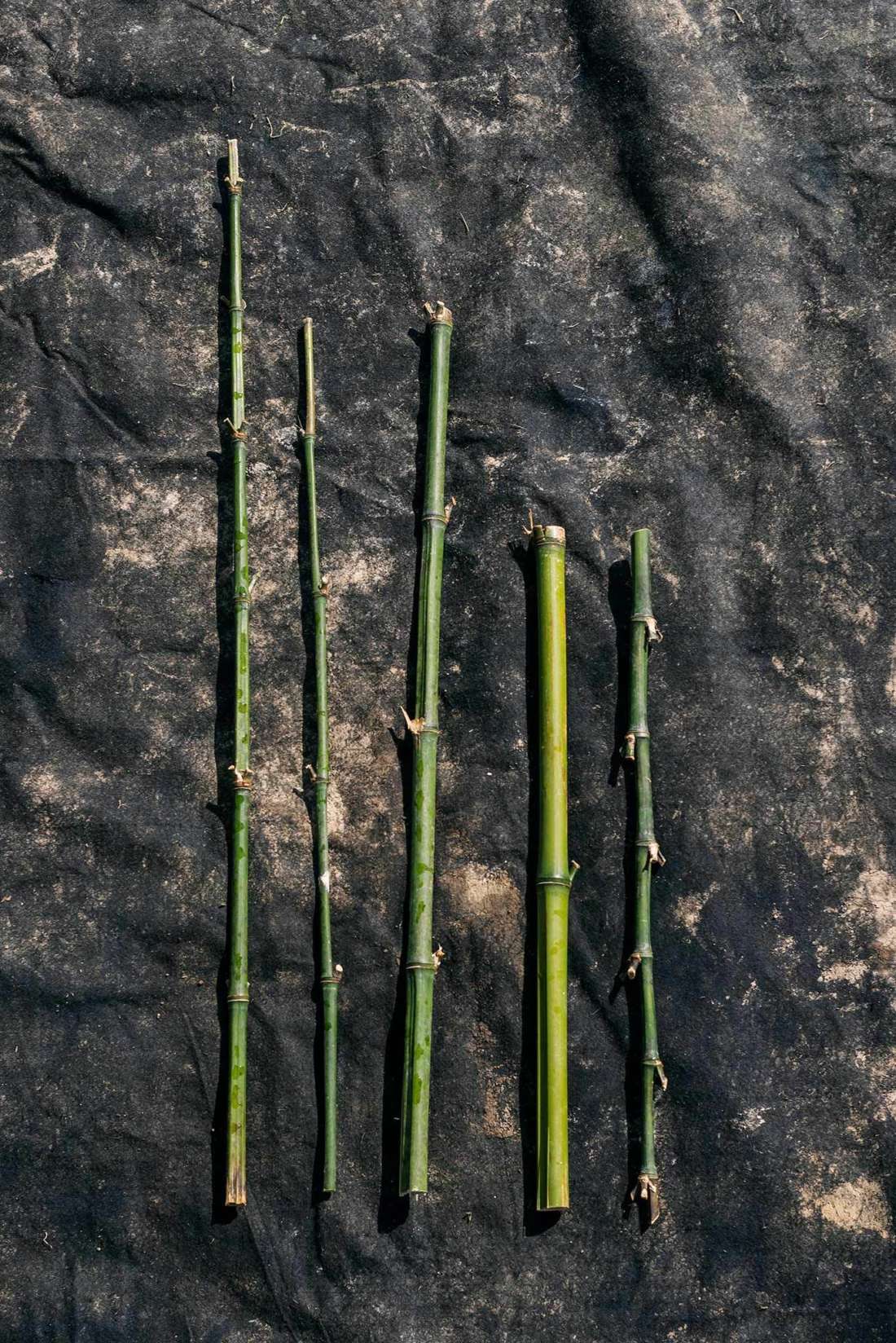
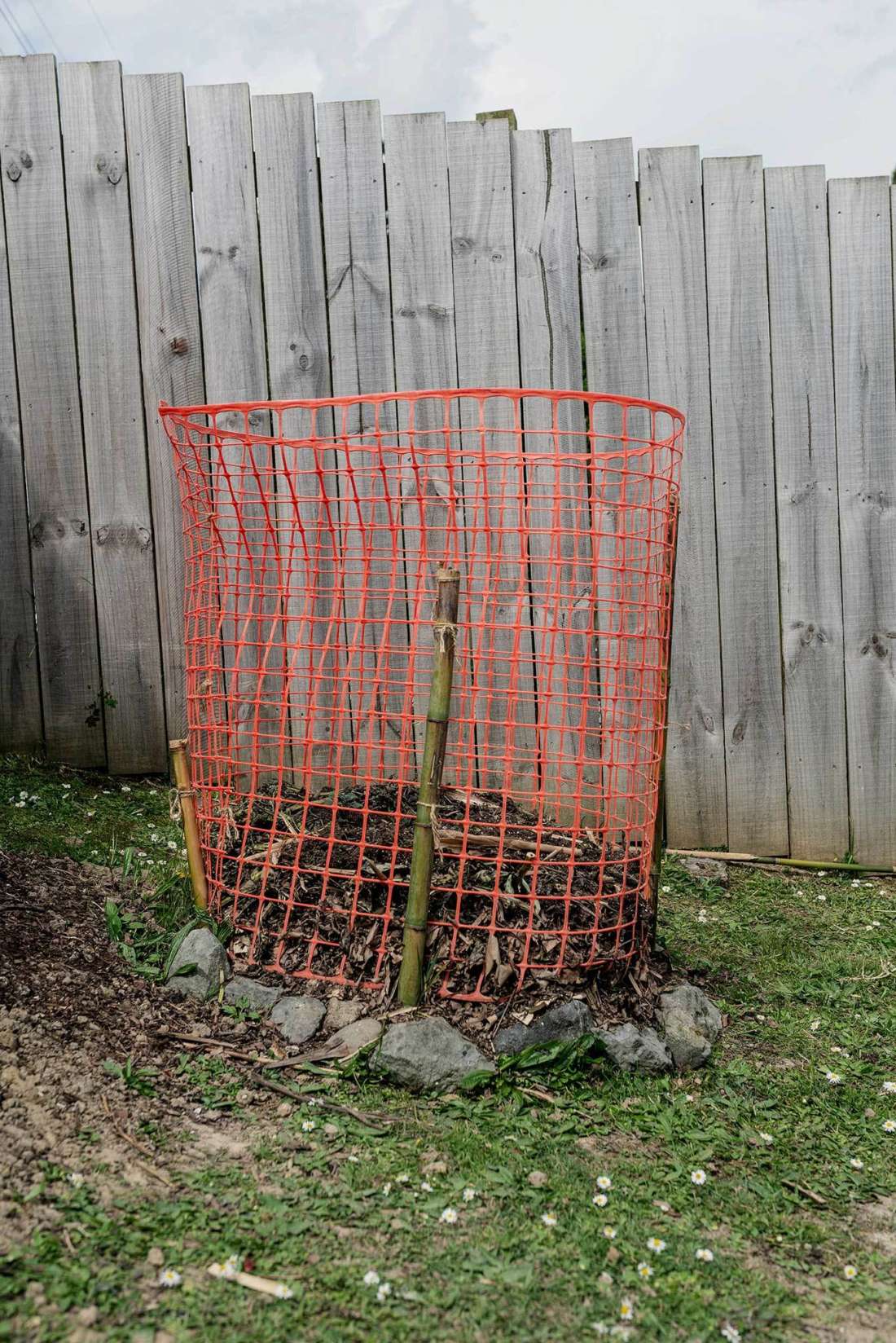
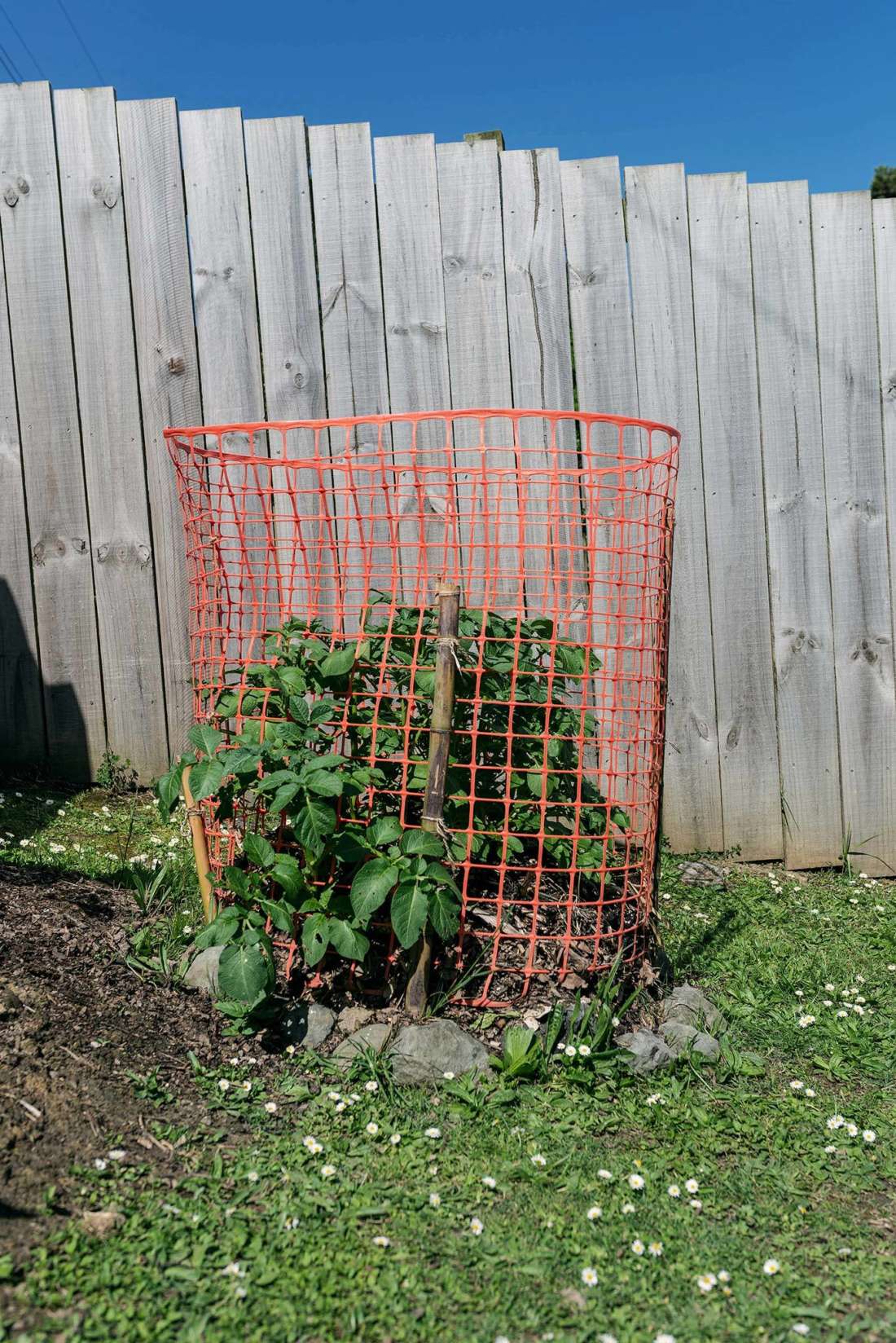
Over the last six months the previously dead space of our front lawn has slowly come to life. Our home has a different energy now, it has been transformed. A variety of birds, bees, ants, spiders and slugs have been attracted to my garden. The soil is richer and healthier, worms and microbial life are starting to thrive as I continue to add organic matter. I have learned to care more deeply about the environment and I throw less in the landfill as I buy less and compost our scraps. Watering the plants, digging the soil, hunting slugs and snails at night, listening to the rain, feeling the sunshine on my face, putting my hands in the soil – free from the gloves that at first I insisted on wearing – these have become the simple pleasures in my life.
We have been living here for two years now and have made a lot of significant changes to our lifestyle. I could never have imagined that I would end up building a utopian suburban garden in our home. I had believed that was a peasants life, that progress was unstoppable and follows you around like a shadow. But we have now aligned ourselves with the nature we came to New Zealand to pursue, we are shining light into the shadow. It has been giving me hope. Indeed, my brain has been rewired – on my 34th birthday, for the first time ever, instead of getting myself a new pair of sneakers or clothes, I bought a big pile of compost to help nourish my seedlings and therefore ourselves and our environment. It turns out, as I was busy enriching the soil, I was enriching our lives too; growing my own slice of paradise, increasingly part of a community and making art again.
